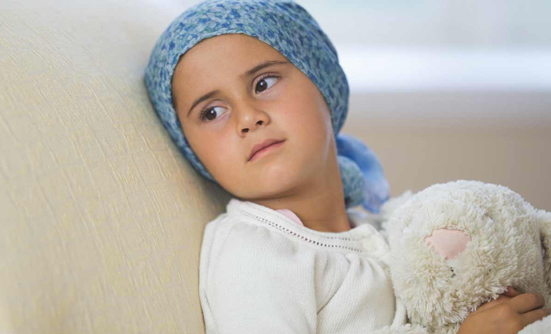Although the incidence of childhood cancer has been increasing over the past 30 years, advances in treatment have also led to increased survival rates.
“The overall 5-year survival rate for pediatric cancers is now about 83%. More and more of these patients are living into adulthood,” says Emily Mueller, MD, MSc, Assistant Professor in Pediatric Hematology Oncology, Indiana University School of Medicine, Indianapolis.
“One publication cited that there are more than 370,000 pediatric cancer survivors living in the United States. Since more than two-thirds of these survivors will develop chronic or life-threatening health conditions caused by the treatment they received or the cancer itself, cancer-related follow-up care throughout their lifetime is imperative,” Dr. Mueller says.
New Healthcare Benefits
With the recent introduction of the Affordable Care Act (ACA), pediatric cancer survivors can no longer be refused health insurance because of a preexisting condition, and there are no annual or lifetime limits for coverage.
“Someone who underwent a bone marrow transplant when they were 2 years old could easily max out a $1 million limit,” explains Dr. Mueller. “The ACA has also helped by allowing children to stay on their parent’s insurance until the age of 26. State-based exchanges have increased affordability and states can now raise Medicaid eligibility, which helps low-income adults who do not have children. Adult survivors of childhood cancer are more likely to have struggles getting through education and getting jobs, so this can really be a benefit for them,” she says.
Barriers to Lifelong Care
Although the ACA has removed some of the obstacles to medical care for adult survivors of pediatric cancer, this population still faces some barriers to appropriate, lifelong healthcare.
Results of the St. Jude Childhood Cancer Survivor Study, one of the most comprehensive follow-up studies ever done, showed that only 50% of survivors had a cancer-related visit with a physician, and survivors without health insurance were the least likely to have that follow-up visit.
According to the Children’s Oncology Group, pediatric cancer survivors should have regular cancer-related physician visits throughout their lifetime.
“Survivors are also still uninsured for various reasons,” says Dr. Mueller. “They may not know about or understand the new provisions in the ACA. Others are opting out of health insurance because secondary illness isn’t at the forefront of their thinking. They may be years out from treatment, no longer taking medications, and not having any medical issues that are readily evident. What they don’t realize is that their history makes them more likely to develop serious, disabling, or life-threatening chronic illnesses, such as heart abnormalities, new cancers, neurocognitive dysfunction, and abnormal lung function.”
“It’s a very complex concept of transitioning from pediatrics to adulthood,” Dr. Mueller adds. “We don’t want to scare our patients, but we need to give them enough information to realize that just because their cancer is cured doesn’t mean they don’t have to be aware. The earlier we can catch these other chronic illnesses, the better able we are to increase their health status and quality of life.”
Many Procedures Still Not Covered
Another hole in the ACA is that insurance companies are only required to cover essential health benefits that are recommended by the United States Preventive Services Task Force (USPSTF). Regrettably, many of the recommended follow-up procedures for childhood cancer survivors do not fall within these guidelines.
“Patients who were treated with chemotherapy and radiation as children may require tests such as echocardiograms and MRIs on a regular basis, but the USPSTF may not have any recommendations for these procedures,” says Dr. Mueller.
“A 25-year-old woman who was treated with chemotherapy as a child may need a yearly breast mammogram. Since mammography isn’t recommended by the USPSTF until the age of 40, however, her insurance company would not be required to cover the procedure at her age. Coverage doesn’t necessarily equal access to care,” she says.
Childhood cancer survivors also face a unique issue when it comes to long-term follow-up care—where should they be treated?
“These patients age out of treatment at pediatric facilities somewhere between the age of 18 and 21, yet they don’t really fall under the care of an adult oncology facility,” she said. “It really takes someone trained in pediatrics and adult medicine to manage these survivors as they age. Not only that, but long-term survivorship care plans for these individuals are just beginning to be established.”
“The Children’s Oncology Group and other organizations have put together some guidelines for long-term care based on the chemotherapy and radiation these patients received as children,” explains Dr. Mueller.
“The idea is to give these care plans to patients, and empower them to take charge of their follow-up care. An adult survivor can take the plan to his primary care provider and say, ‘Look, it’s been 5 years since my last echocardiogram, and according to these recommendations I’m due for another one.’”
According to Dr. Mueller, while survivorship care plans are a step in the right direction, there is still much work to be done in this area.
“There is a lot of variability to how often and how well these plans are being created, because of the time and money it takes to develop each one,” laments Dr. Mueller. “And, once these plans are developed, it’s still uncertain whether insurance carriers will even cover the recommended procedures.”
Patient Resources
Stupid Cancer
http://stupidcancer.org/directories/money.shtml
CancerCare
http://www.cancercare.org/publications/62-sources_of_financial_assistance
Cancer Financial Assistance Coalition
http://www.cancerfac.org/
Manage Cancer
http://www.managecancer.org/resources/financial-support.aspx
US Department of Health & Human Services
http://www.hhs.gov/healthcare/rights/law






